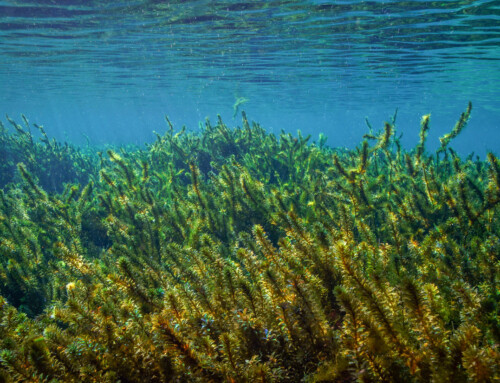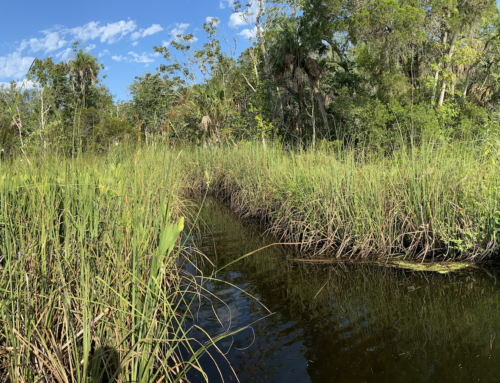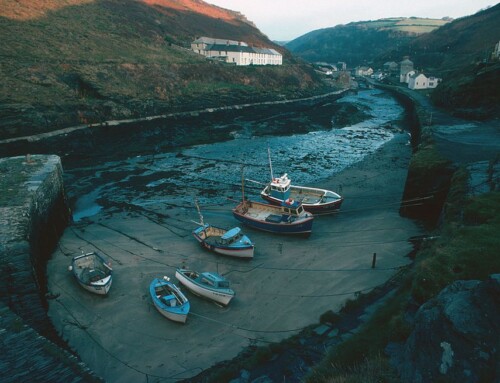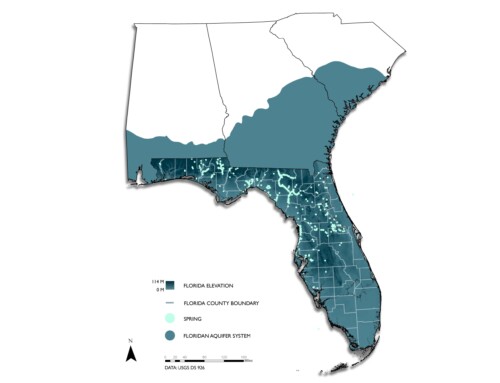Sawgrasses
The other day I was paddling through sawgrasses on the southwest side of Kings Bay, and above is a panorama I took. If you haven’t paddled or boated through sawgrasses, give it a try! There are endless pathways that twist and turn and bring you deeper into the heart of nature. Being among the sawgrasses and Florida’s natural beauty puts into perspective what Save Crystal River strives to protect and preserve.
Interestingly enough, sawgrass is not actually a grass. Its scientific name is Cladium jamaicense, and it is a member of the sedge family. Sawgrass gets its name from its grass-like appearance and the tiny teeth along its edges that resemble a saw blade (see image below) The blades can catch your skin and cut you, but if you’re careful, they won’t even leave a mark. Now, if you decide to jump into a patch of it, things might not turn out so great.
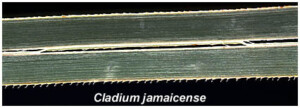
There is a rhyme to help identify some grass-like species, and it goes like this: “Sedges have edges. Rushes are round. Grasses are hollow. What have you found?” “Sedges have edges” means that most sedges have the ridges and the saw-like characteristics of sawgrass. For example, papyrus is a sedge, and if you run your finger along the blades at the top of the plant, you will feel the rough edges. You can easily find papyrus along the water at Crystal River. To learn more about the differences between sedges, rushes, and grasses, visit this link: https://homeguides.sfgate.com/difference-between-rushes-sedges-grasses-74262.html.
Salinity
There is only a small variety of different species in sawgrasses, but the grasses foster lots of life. Typically, alligators use sawgrass to nest. After nesting season, fish, turtles, frogs, and even birds use abandoned nests as habitat. Sawgrasses not only provide habitat, but they also provide a place of refuge for any animal trying to escape the Florida sun or a pursuing predator. On my morning paddle, I not only saw an alligator, but also gar, red-winged blackbirds, and bright blue dragonflies at every turn. While I expected to see this wildlife, I didn’t expect to see barnacles on my dock posts. Due to the rising salinity levels of Crystal River, the once freshwater part of King’s Bay I live on has become salty enough to support barnacles.
Crystal River is a mix of saltwater and freshwater. Near the mouth of the river by the Gulf of Mexico, the salinity is much higher than the water coming out of a spring. Depending on the tides, the salinity will change at different parts of the river. (High tides bring in more Gulf water, making the salinity of the river rise.) Scientists call this mix of saltwater and freshwater brackish water, and it has a salinity measurement of 0.5-30 parts per thousand (ppt). (Springs have a salinity of about 0-0.5 ppt while the Gulf has a salinity of about 36 ppt.)
While the introduction of barnacles is not too harmful to the ecosystem, there are more invasive and harmful animals on the way. For example, people have seen bull sharks and tiger sharks in Crystal River. Both of these sharks, specifically bull sharks, are known for being the more aggressive of the sharks. Larger sharks are typically found in salt water, but because the salinity of Crystal River has risen, sharks have been able to travel further into the river. This is a perfect example of how increased salinity in a freshwater source can lead to the degradation of an ecosystem. Don’t worry too much about sharks though. While they have been spotted in Crystal River, they typically want nothing to do with people. Statistics show people are more likely to get struck by lightning than be attacked by a shark.
Why is Crystal River Becoming Saltier?
So, you ask, why is Crystal River becoming saltier? It has always connected to the Gulf of Mexico, so why wouldn’t the river have always been this salty? This question I will address in next week’s post, but I’ll give you a hint: it involves the aquifer level.
I’ll see you on the water,
Walker A. Willis
Photo Credits:
Sawgrass Diagram: 4-H Forest Research



